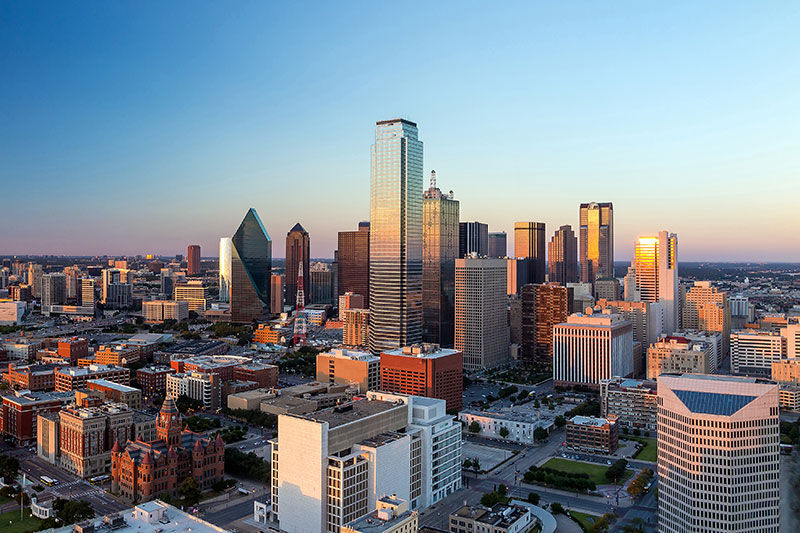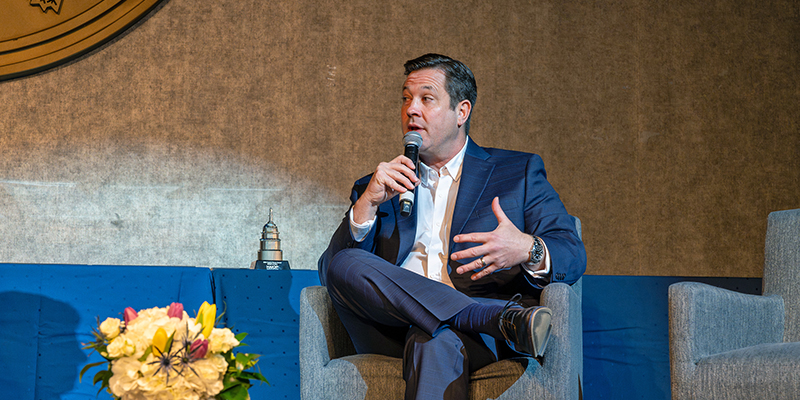Once upon a time in the West – as recently as 10 years ago – you had your choice of locations if you were interested in building in Dallas due to the plentiful available space. You could “always keep building in Dallas,” the thought went. Popular perception was of a state dominated by the oil industry. Modern Dallas paints a much different, more varied and compelling picture.
Dallas/Fort Worth recently captured the number three target market for real estate investors in the Americas intending to increase property acquisitions in 2016, according to a recent CBRE report. What makes this metro region so popular after only Los Angeles and New York?
To kick off I.CON ’16: Impact Projects in Dallas, NAIOP sat down with Josh McArtor, Executive Vice President, Investment Properties, CBRE, and Miller Hamrick, Research Coordinator, Industrial, with CBRE, for a look at what – if not oil – is fueling the thriving Dallas industrial market.
Key factors cited in driving the region’s industrial real estate activity: Central location and access to multiple transportation routes, population (nearly 7 million), business-friendly environment, a diverse economy and a skilled workforce.
Another critical factor: The dramatic impact of e-commerce and related third party logistics companies (3PLs).
“Not only has the tidal shift in the way Americans shop driven demand, but e-commerce also has influenced how new product is built, and where that product is located,” said Hamrick. “Dallas always has been a convergence point for trade routes, and this tradition continues today with 3PLs who choose to locate here.”
Large corporations and Fortune 500 companies that have settled in the Dallas region include Toyota, Liberty Mutual, State Farm, Amazon.com, GE Transportation locomotive-manufacturing plant and Walmart.com. “Transportation and warehousing and wholesale merchants have seen incredible job growth over the past couple of years, which is a reflection of the region’s population growth,” Hamrick said.
Dallas is experiencing a surge in both infill and suburban urbanization, with McArtor pointing to South Dallas and North Fort Worth as places to watch. “You’re going to see the vast amount of construction on the outskirts,” McArtor said.
Think everything is bigger in Texas? Welcome to the “$5 Billion Mile,” home to the Dallas Cowboy’s forthcoming headquarters, expected to open later this year. Approximately 30 miles north of Dallas, “Frisco has $5.4 billion of investment either announced or under construction within a mile stretch,” according to a Dallas Business Journal article.
McArtor noted a shift in foreign capital over time: Investors who previously focused only on office – and only on the East or West Coast – have expanded their scope to include industrial and centrally-located markets such as Dallas and Chicago, seeing these areas as markets which can reliably offer good returns. Outlook for future investments: “I’m feeling very bullish on Dallas,” McArtor said.
Key Dallas/Fort Worth Facts and Figures:
- Dallas/Fort Worth’s industrial market saw occupiers take down 5.9 million sq. ft. in the past 90 days.
- This makes Q1 2016 absorption the second-highest level first quarter absorption in DFW since July 2009, a high-water mark since during the economic recovery.
- Q1 2016 saw 4.9 million sq. ft. in deliveries, with 53 percent of deliveries pre-leased.
- An estimated 21.4 million sq. ft. of space remains under construction, with 42 percent of this space preleased.
- 3PL and e-commerce occupiers are the market’s juggernauts this year, accounting for 76 percent of total net absorption to-date, a direct result of Big D’s population boom.
(source: CBRE Research: Dallas/Fort Worth Industrial, Q1 2016)
 This post is brought to you by JLL, the Social Media and Conference Blog sponsor of NAIOP’s I.CON ’16: Impact Projects. Learn more about JLL at www.us.jll.com or www.jll.ca.
This post is brought to you by JLL, the Social Media and Conference Blog sponsor of NAIOP’s I.CON ’16: Impact Projects. Learn more about JLL at www.us.jll.com or www.jll.ca.














